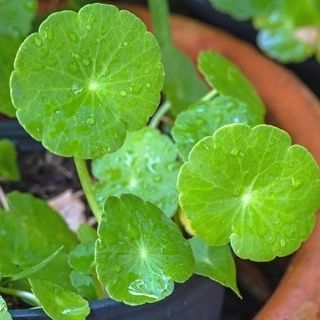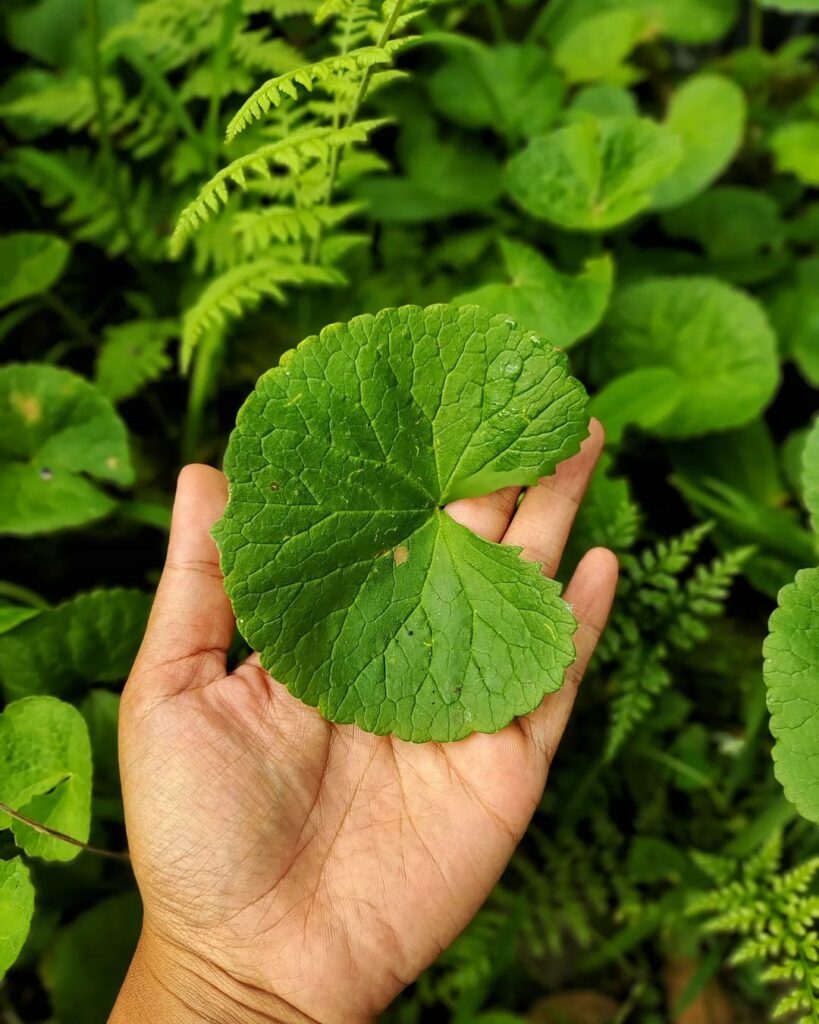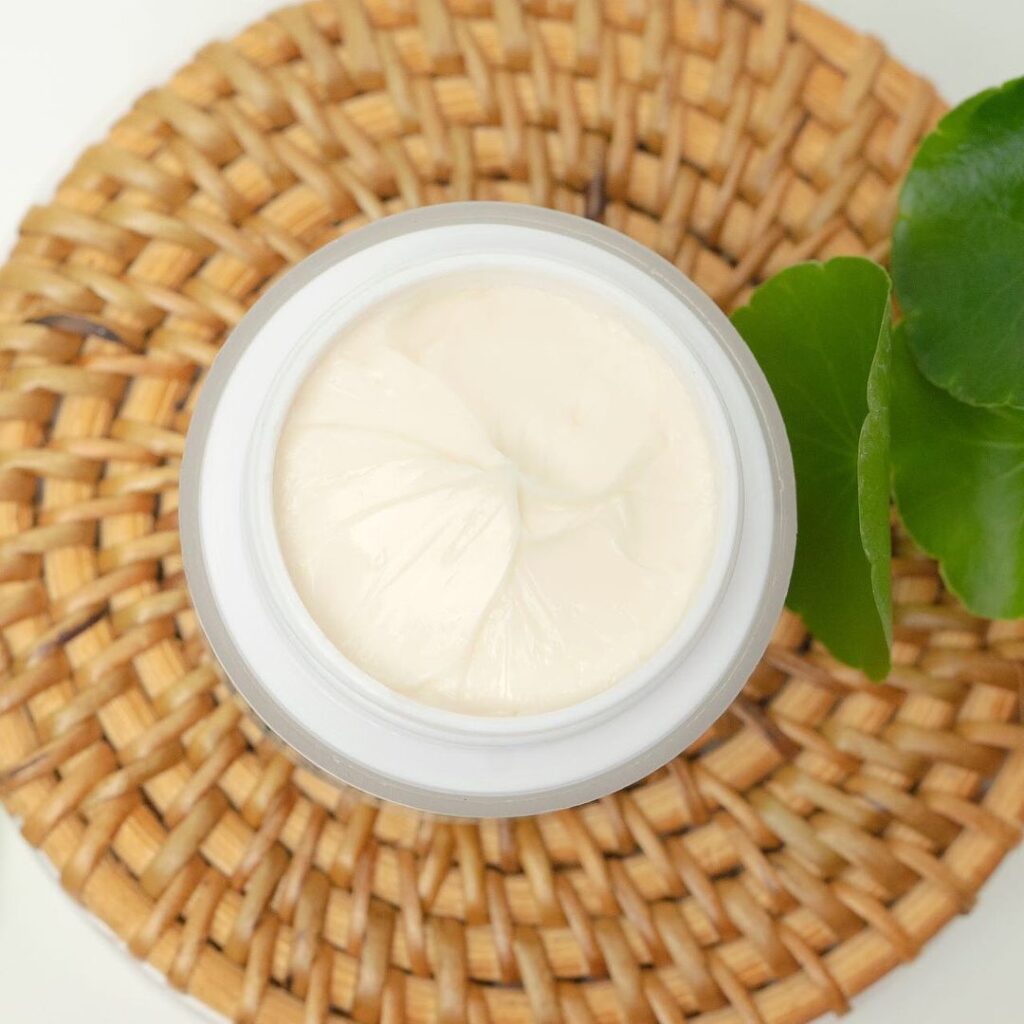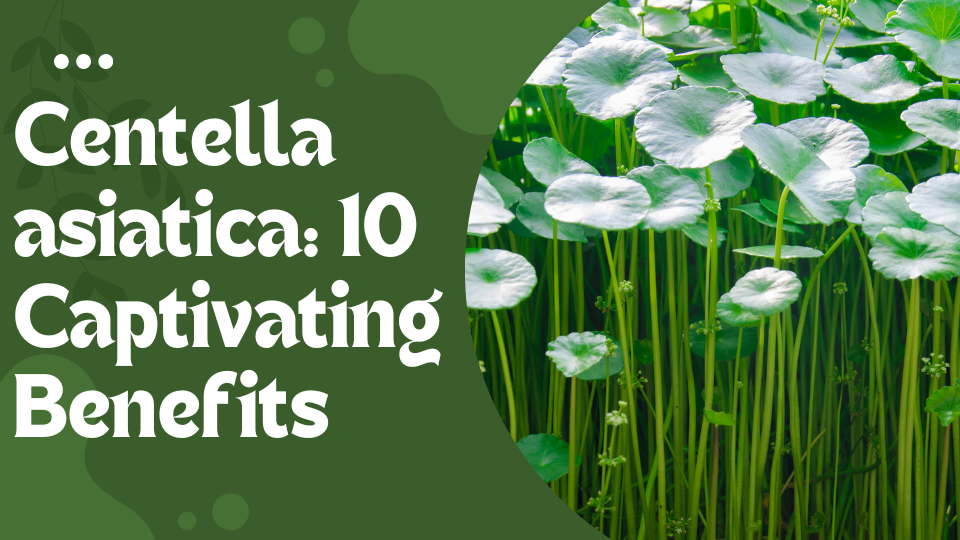A great medicinal plant utilized for many years in Asia is called centella asiatica. It is regarded one of the effective herbs for mending wounds and making the skin look better. In addition, there is some evidence that it promotes healthy hair growth. This article will provide you with all of the information you want about centella asiatica and why you should use it.

Table of Contents
What is centella asiatica?

Centella asiatica, sometimes called Gotu Kola or Indian Pennywort, is a perennial plant that thrives in tropical climes and goes by various other names. Because of their curative qualities, the leaves of this plant have been used in the practice of traditional medicine for many years.
Acne, eczema, and psoriasis are a few skin diseases that have responded well to treatment with centella asiatica. It has also been used as a treatment for the bites and stings of certain insects.
Triterpenoids, found in centella asiatica, are known to have anti-inflammatory benefits on the skin, and centella asiatica includes these molecules.
When applied to the affected area, these substances diminish the number of blood vessels in that region, which in turn helps to alleviate redness and swelling. In addition, they heal damaged tissues and stimulate the regeneration of damaged cells.
Benefits of centella asiatica

- It has the potential to aid in improving cognitive function.
In a pilot trial published in 2016, researchers investigated the effectiveness of folic acid and gotu kola extract in improving cognitive function after a stroke. In this limited research, the effects of gotu kola were evaluated on three groups of participants: one group took 1,000 milligrams (mg) of gotu kola per day.
Although gotu kola and folic acid were equally good in enhancing overall cognition, gotu kola was more effective in increasing the memory domain. Folic acid was beneficial in improving general cognition.
The effects of gotu kola water extract on the mice’s cognitive performance were investigated in a second investigation. Even while the Morris Water Maze was effective in enhancing learning and memory in both young and elderly mice, the impact was much more pronounced in the older mice.
2. It could be useful in the treatment of Alzheimer’s illness
Because gotu kola may improve both memory and nerve function, there is reason to believe that it might be helpful in treating Alzheimer’s disease. Research conducted in 2012 on mice indicated that gotu kola extract had a good impact on the behavioral impairments present in animals diagnosed with Alzheimer’s disease.
The extract was also proven to have a small impact on shielding brain cells against toxicity in trials conducted in the lab and on animals. Additionally, this may prevent the plaque connected with Alzheimer’s disease from growing on the cells.
However, further study is required before determining how precisely gotu kola may be utilized to treat Alzheimer’s disease. Before using this, discuss the possibility of incorporating it into your treatment plan with your attending physician.
3. It could help lower levels of worry and tension.
In a research conducted in 2016 on animals, the effects of gotu kola were discovered to have an anti-anxiety impact on male mice that had been sleep deprived for a period of 72 hours. Sleep deprivation may induce anxiety, oxidative damage, and neuroinflammation.
Mice administered gotu kola for five days in a row before being subjected to sleep deprivation exhibited much less anxious behavior. They also saw an improvement in their locomotor activity, and they had reduced oxidative damage.
A study conducted in 2013 on the effects of several herbal remedies for anxiety came to the same conclusion: gotu kola has an immediate calming impact. However, to corroborate these results, further study is required.
4. It has the potential to work as an antidepressant.
Because it has a beneficial influence on the brain function, gotu kola may be an efficient treatment for depression.
These results are supported by a review published in 2016, which cites research conducted on 33 individuals who suffered from a generalized anxiety disorder. For one month, the participants were instructed to consume gotu kola instead of their regular antidepressant prescription. They saw reduced feelings of tension, worry, and despair in themselves.
Another research reviewed in this overview looked at the impact that gotu kola had on rats with persistent depression produced in them. Herbal medicine had a beneficial impact on several aspects of behavioral depression, including weight, temperature, and heart rate, all of which were positively affected by the treatment.
5. It might increase circulation and make the swelling go down.
According to research conducted in 2001, gotu kola can lessen the likelihood of experiencing issues with fluid retention, ankle edema, and circulation associated with flying flights longer than three hours.
Participants who suffered mild to severe superficial venous illness with varicose veins were requested to consume gotu kola for two days before their trip, the day of their flight, and the day following their journey. This was done both before and after their flight.
The individuals who took the supplement had considerably less fluid retention and ankle edema than those who did not, according to the research findings.
Research done in the past has shown that gotu kola may be beneficial in the treatment of varicose veins. This is because gotu kola has a beneficial influence on the metabolic processes of the connective tissue that makes up the vascular wall.
6. It may help alleviate the symptoms of sleeplessness.
Insomnia is a common symptom of mental health issues such as anxiety, stress, and depression. Gotu kola, believed to be effective in treating these illnesses, may also be used to treat insomnia. Some people believe this herbal cure is a risk-free substitute for prescription drugs often used to treat insomnia and other types of sleep disturbances.
Gotu kola may be helpful in treating sleep disturbances; however, further study is required to corroborate these results.
7. It may help in reducing the visibility of stretch marks.
A study conducted in 2013 found that gotu kola can lessen the visibility of stretch marks. The terpenoids that may be found in gotu kola are believed to stimulate the body’s natural creation of collagen. This may not only help repair any stretch marks that are already present, but it may also help prevent new stretch marks from appearing.
8. It may hasten the healing of wounds and reduce the appearance of scars.
In a study conducted in 2015 on rats, researchers discovered that wound dressings containing gotu kola promoted faster healing of many different kinds of wounds. This comprises incisions that have been made cleanly by sharp instruments, rips that have been created irregularly by blunt force trauma, and diseased tissue.
9. It might assist in easing the discomfort in your joints.
The anti-inflammatory effects of gotu kola might be beneficial in treating arthritis.
Research that was conducted in 2014 on collagen-induced arthritis in rats indicated that oral administration of gotu kola decreased joint inflammation as well as the erosion of cartilage and bone. Because of its antioxidant properties, it has a beneficial impact on the immunological system as well.
10. It could have a cleansing impact on the body.
More recent research looks at the influence that gotu kola has on toxicity in the liver and kidneys.
Research that was conducted on animals in 2017 found that gotu kola has the potential to reduce the harmful effects that are caused by the antibiotic isoniazid. Isoniazid is both a treatment for TB as well as a preventative measure.
Centella asiatica skincare

Ayurvedic medicine has used a herb called centella asiatica for many generations. It is also to an astringent and antibacterial agent and has anti-inflammatory and antioxidant qualities. As a result of its moisturizing properties, it is an ingredient for use in cosmetics and personal care products.
The plant is known to occur naturally in Asia but is also grown in various regions of the globe. In addition to its use in cosmetics for treating several skin problems, such as eczema, acne, psoriasis, and wound healing, centella asiatica has a history of application in traditional medical practices.
FAQs
Is Centella asiatica good for skin?
The primary benefit of Centella asiatica is its capacity to promote skin health. It may aid in the treatment of acne, eczema, psoriasis, and other inflammatory skin disorders. It is also an antioxidant that aids in the battle against free radicals, which cause skin cells to age and wrinkles. Therefore, if you’re searching for a natural approach to enhance your complexion.
What is Centella asiatica good for?
Centella asiatica is primarily recognized for its wound-healing and anti-inflammatory properties. This plant has been used to cure a variety of conditions, ranging from acne to eczema, and scientific study indicates good effects.
What does Centella asiatica do to your face?
This plant is claimed to contain antioxidant qualities that reduce skin aging by increasing collagen formation. It may also help regulate oil production on the skin, therefore preventing acne outbreaks.
Does Centella asiatica boost collagen?
Yes, Centella asiatica may enhance collagen. Collagen is the body’s most prevalent protein. It is responsible for preserving the flexibility, strength, and structure of the skin. Collagen also helps to maintain healthy and flexible joints.
Conclusion
It is a common misconception that centella asiatica is only used as a superfood component in Korean cosmetics. However, this is different. It belongs to the family Apiaceae and has anti-inflammatory and anti-viral characteristics, both of which have been used in traditional Chinese medicine for hundreds of years.
The use of centella asiatica may strengthen your immune system and keep you healthy since it is loaded with essential minerals like vitamin C and iron. When you look at this component that has been used for centuries and the skin care advantages it provides, the next time you see it in a product, you may think twice before dismissing it as just another ingredient utilized in the Korean K-beauty trend!

